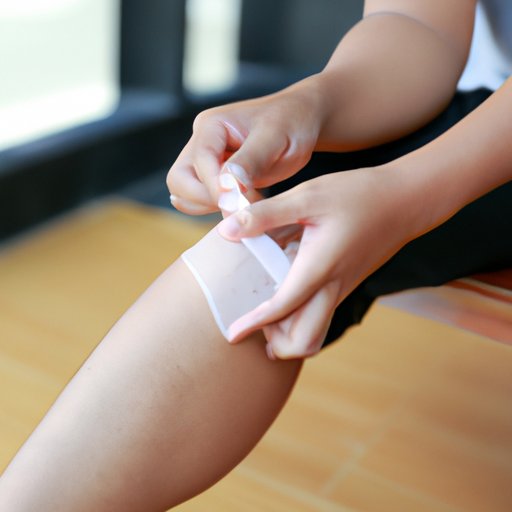
Introduction
Accidents and injuries can happen to anyone at any time. Whether you cut your finger while preparing food or get a deep gash while playing sports, it is essential to know how to identify the best course of action. In some cases, cuts or wounds may require stitches to promote proper healing and prevent complications. This article aims to provide you with the information you need to determine when you require this type of medical treatment.
Symptoms to Look Out For
Recognizing the signs that you need stitches involves paying attention to your body’s physical reactions. Deep cuts or gashes, excessive bleeding, and jagged or irregular wounds are the most common indicators that necessitate stitches. If you can see fatty tissue, muscle, or bone through the wound, it is likely deep enough to require medical attention. Similarly, if blood is spurting out of the cut or wound, it requires immediate attention.
The Importance of Timely Treatment
It is crucial to seek medical attention promptly if you have a deep cut or wound that requires stitches. Delaying treatment even for a few hours could increase your risk of complications such as infection, which can lead to more severe health problems. Additionally, waiting too long to get stitches can potentially impact your ability to heal and lead to unsightly scarring.
Home Treatment vs. Seeking Professional Help
Although some wounds can be treated at home, it is essential to understand the differences between minor injuries and those that require professional attention. Essentially, you should seek professional help if the wound is deep, long, and if the bleeding continues for more than 20-30 minutes. If the wound is on your face, hands, feet, or joints, it may require professional attention to heal correctly and lessen the chance of scarring.
Understanding the Stitching Process
If you require stitches for a cut or wound, it can be helpful to learn about the procedure before you go. During the stitching process, a doctor will use a needle and thread to bring the edges of the wound together and promote healing. You can also expect to be given medications for pain relief and to reduce the risk of inflammation or infection. Your doctor may advise you to keep the area dry and covered for a few days after receiving stitches.
When to Remove the Stitches
Removing stitches is a relatively simple process that requires minimal effort. In most cases, the healing process takes between five and 14 days, allowing the tissue to close and scar gradually. Once the healing process is complete, your doctor will remove the stitches. You will know when it’s time to remove stitches if the wound feels lumpy, and the edges may appear slightly irritated due to the tissue growth.
Prevention is Key
When it comes to avoiding the need for stitches, prevention is better than cure. Being mindful of potential hazards, using safety gear like helmets or gloves when necessary, and learning proper techniques for sports activities can significantly reduce your risk for injuries. Proper nutrition, hydration, and rest can also help keep your body healthy and prevent illnesses that could make you more vulnerable to injuries.
Conclusion
Recognizing the symptoms that require stitches and seeking timely medical attention is vital for maintaining your overall health. While accidents may be unavoidable, following these simple steps will help you understand how to deal with cuts and wounds when they happen, preventing unnecessary complications and infections. Remember that in the event of a deep cut or jagged wound, seeking professional help is always the right choice. By staying attentive, prepared, and informed, you can minimize the likelihood of needing stitches and allow your body to heal quickly and properly.




